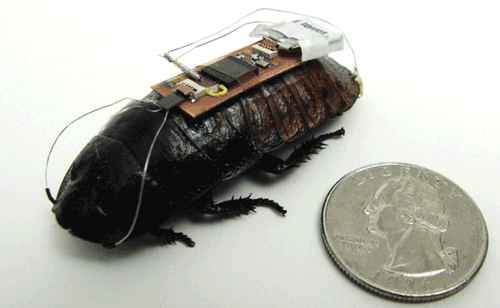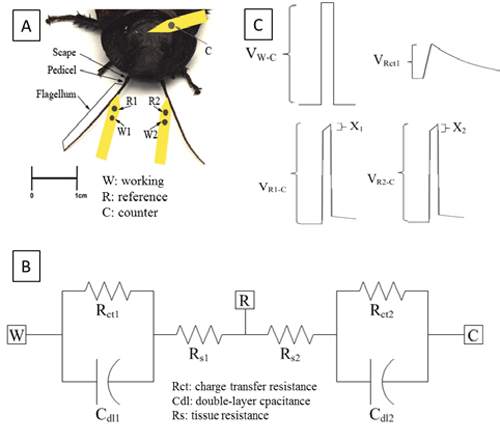Wirelessly controlled cockroaches could save the day
Researchers from North Carolina State University (NCSU) have developed a technique that uses an electronic interface to remotely control, or steer, cockroaches. Okay, I know you are wondering why this is even on the horizon of anything important. According to Alper Bozkurt, a co-author of the paper on the subject and one of the researchers, it is because the team wanted to create a wireless biological interface for these robust insects that can enter small spaces. They could be used to create a mobile web of smart sensors to collect and transmit information (think The Matrix). For example, they could find survivors in a building destroyed by an earthquake or other disasters.
This is a fascinating idea because it is an elegant way to bypass designing an inferior mechanical version of something that has been around for eons. The researchers recognized the enormity of building a small-scale robot that can function in difficult and varying conditions so they looked to nature, and what a tough replacement they found. There are 4,500 species of cockroaches and they chose the Madagascar hissing cockroach as the best fit because of its relatively large size (~50 to 75 mm), slow speed (~3 cm/s), and long life span (~2 years). They now needed to figure out how to use a biobotic (both robot and biological) approach to control the insect.
As you can imagine, there were challenges putting electronics on the cockroach. They had to find a cost-effective and electrically safe way to control the roaches, to ensure the roaches operated the way they wanted, and to steer them to specific areas of interest. They embedded a commercially-available chip with a wireless receiver, transmitter, and microcontroller onto a circuit board and placed them on each roach. This PCB solution weighing about 500 milligrams, fit like a backpack on the roach.

Fig. 1: The assembled SoC-based backpack has flexible flat cable connectors for battery and probe connections and is implanted on the cockroach
The microcontroller monitors the interface between the implanted electrodes and the tissue to avoid potential neural damage. It is wired to the roach’s antennae and cerci (the appendage on the rear of the insect). The cerci are sensory organs on the roach’s abdomen used to detect movement in the air that could indicate a predator is approaching – causing it to scamper away. Knowing that the cockroach detects adversaries and its response helped the researchers figure out what they needed to do to control it. They attached wires to the cerci to coax the roach to move. So, for example, if the roach detects something behind, it will move forward. They also connected wires to its antennae (see Fig. 2). These served as electronic reins by injecting small electrical charges into the roach’s neural tissue. The charges trick the roach into thinking that the antennae are in contact with a physical barrier, which effectively steers them away from the barrier.

Fig. 2: (A) Anatomical parts of the cockroach antenna and diagram of proposed three electrode measurement set-up to assess the voltage across the tissue electrode interface. (B) The equivalent circuit of the tissue electrode interface. (C) PSpice simulation output of voltages between working, reference, counter electrodes and across the tissue electrode interface.
In a recent experiment, the researchers were able to use the microcontroller to precisely steer the roaches along a line that curves in different directions. They were able to send right and left turn commands remotely with small voltage stimulation pulses applied to either antenna through the electrodes to get the roach to turn accordingly. Upon application of the stimulus, the cockroach briefly stopped assuming existence of a barrier or a predator, and then took a turn accordingly.
To their credit, the researchers even made sure they followed ethical standards during the treatment of the insects.
Find a video of the experiment here http://www.youtube.com/watch?v=gmbEX7zDzog
Read the paper, “Line Following Terrestrial Insect Biobots,” at http://ibionics.ece.ncsu.edu/assets/EMBC_12.pdf
■
Advertisement
Learn more about Electronic Products Magazine





